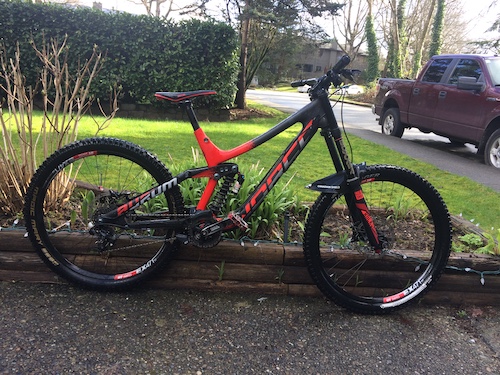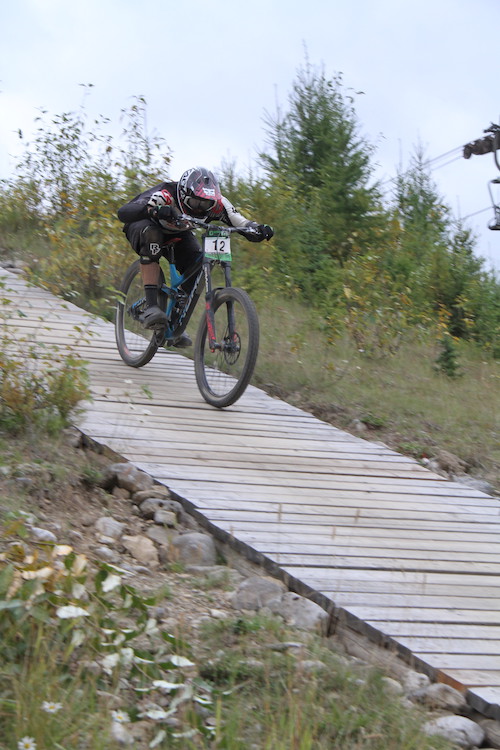I attribute a lot of my success in 2015 to the C4 Rider Training program that I had been a part of. The team sponsor is Norco and I decided to be a part of the team and with that, came a new bike.

One big difference was switching from Shimano brakes and Fox suspension to a full Sram setup. C4 Rider Training was supported by Sram this year and since I had never ridden Rockshox suspension, I was really curious to see how it performed compared to Fox and Marzochi. The suspension was pretty good. The rear shock was a bit confusing with the beginning stroke rebound and end stroke rebound, and the fork didn’t have as much adjustment or support as I would have liked but the guys at Fluid Function in Squamish helped me dial things in to how I liked it.
The Carbon Aurum was a size large at first, but after realizing that they had Aluminum versions in XL, I swapped out all the components from my Large to the XL, which fit much better. I didn’t notice a huge difference in the Carbon vs Aluminum. The carbon version had an aluminum rear triangle, which is where a lot of flex comes from, so I didn’t really see a huge difference in the stiffness of the frames.

The XL frame fit me well. It wasn’t quite as long as the GT but it was more poppy and I could throw it around a bit easier. The bike also had external cable routing, which made changing brake lines and shifter cable housing a lot easier than internal routing, but also had a downside of having lots of little brackets that held the cables to the frame.
The bike came with Sram Guide brakes and a coil sprung fork. For the first little while, I didn’t swap anything out and used those parts. I quickly realized that the Guide brakes didn’t have nearly as much power as the Saint brakes that I was used to. After a little bit of research, I realized that those brakes aren’t meant for DH bikes, they’re meant for trail bikes. I was confused as why they would put trail brakes on a DH bike, but to fix it, I bought some Code brakes, and wow, what an improvement! They had a lot more power and were less finicky to bleed than the guides. I was very happy with these brakes and never had any problems with them. The only downside was bleeding them took a lot longer and more tools than bleeding Saint brakes.
Just like the the coil marzochi fork, the Boxxer wasn’t too bad, but I still wanted the adjustability that an air sprung fork gave me, so I upgraded to an air cartridge soon after building up the bike. Luckily I did it so soon because if you use the coil fork for too long, the spring will damage the inside of the stansion making it impossible to run the air system. If you ever have a new coil fork and want to change it to air, don’t ride the coil spring too much before upgrading or you’ll risk having to buy a new stansion.
The whole team seemed to have a similar problem with the Sram derailleurs coming loose, sometimes needing to be tightened every run. On top of this being annoying, it would often strip out derailleur hangers. I think I went through 5 or 6 that year. Not only because of the derailleur coming loose, I did bend a couple, but I wouldn’t have had to replace as many if the derailleurs stayed tight. We tried everything, locktite, teflon tape, even zip ties trying to keep the bolt from coming loose. Fortunately Fluid Function had a fix that helped keep the derailleur tighter, but didn’t solve the problem completely. The derailleurs themselves were bulletproof, and neither I or my brother had to replace one the entire season, even with smashing them around on rocks and roots.
Overall, I didn’t have any real complaints with how the bike performed, and most of the downsides were with parts that were put on because it was a cheaper build compared to other bikes that I’ve had. This was solved by upgrading the parts that were giving me trouble. I found that the bike was good for racing, but also was fun to hit big jumps and drops.
